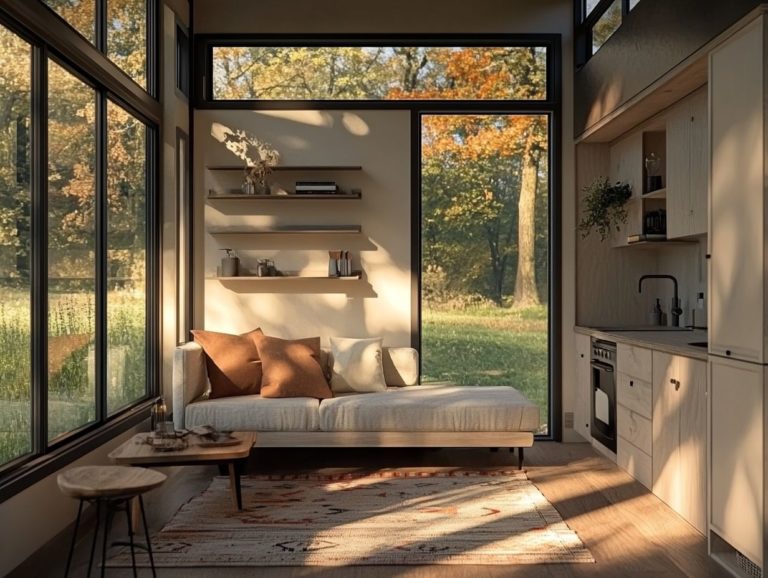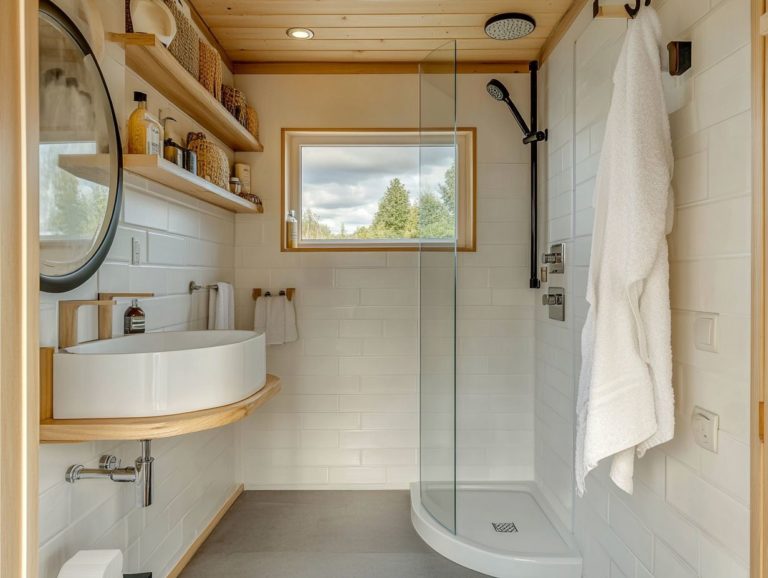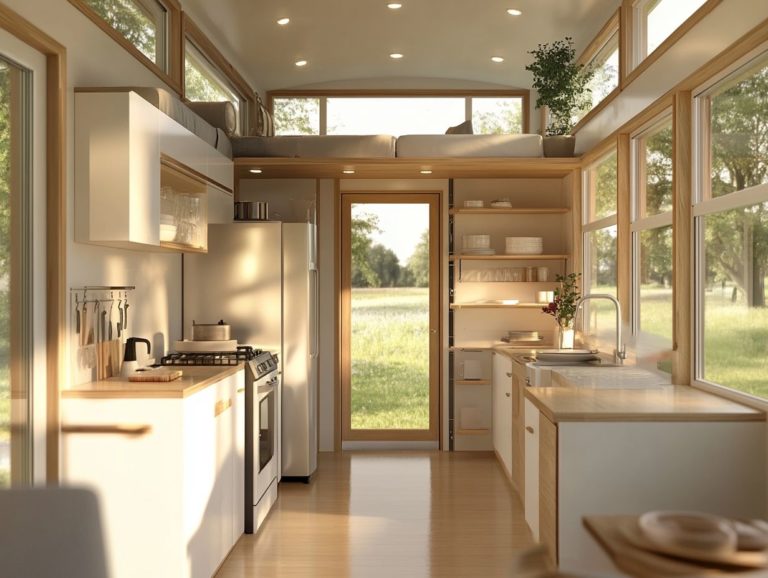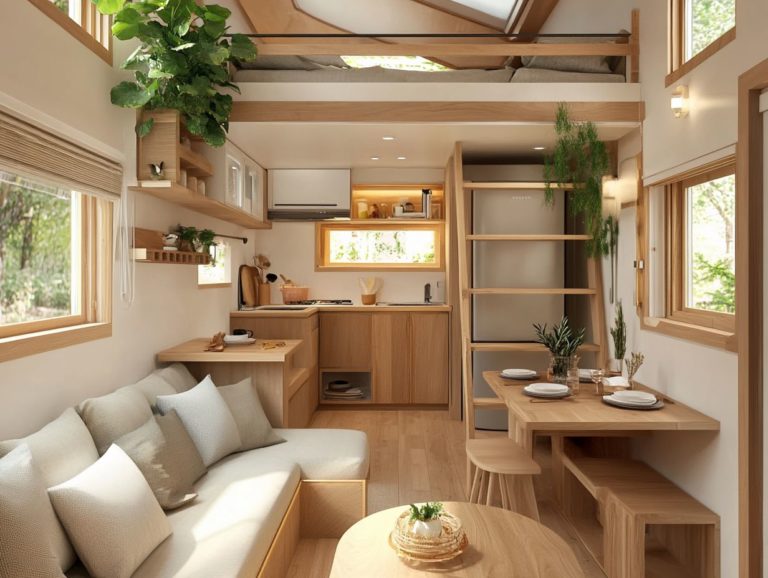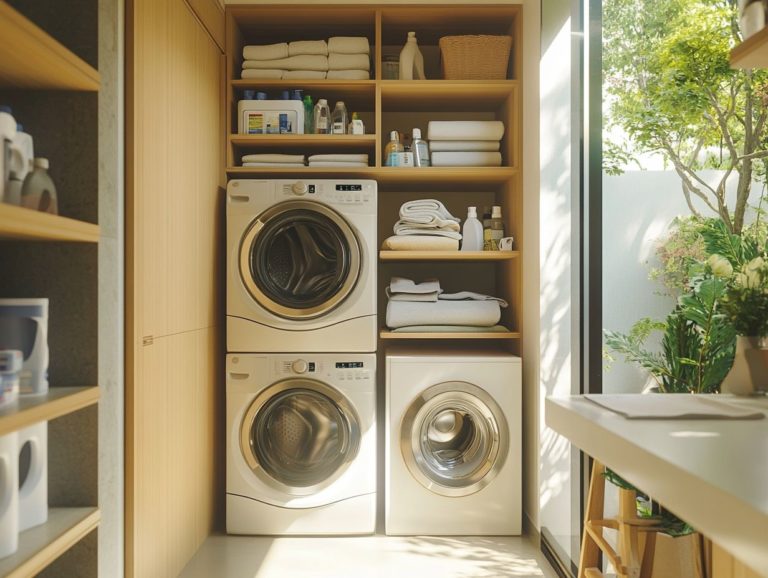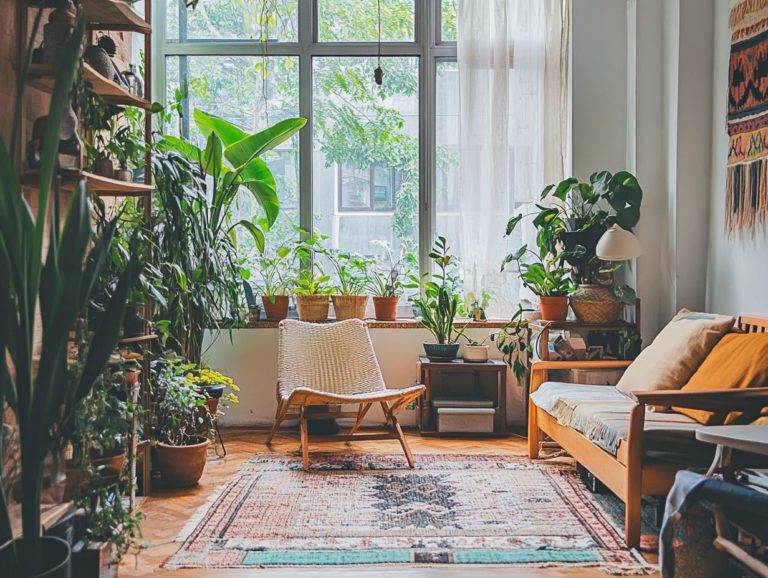The Future of Tiny House Design: Trends to Follow
Tiny houses captivate the heart and imagination, presenting a refreshing take on living spaces that prioritize simplicity, sustainability, and creativity.
This exploration delves into the reasons behind the rising trend of tiny living, highlighting eco-friendly designs and ingenious space-saving solutions. It also discusses the integration of smart technology.
From distinctive architectural styles to the promise of tiny house communities, discover how this lifestyle transforms lives!
Embark on this journey and envision the future of tiny house living and its potential for a more sustainable world.
Contents [hide]
- Key Takeaways:
- The Rise of Tiny Houses
- Sustainable Design in Tiny Houses
- Innovative Space-Saving Solutions
- Technology in Tiny House Design
- Unique and Creative Tiny House Designs
- The Future of Tiny House Communities
- Frequently Asked Questions
- Curious about the latest trends in tiny house design?
- How are tiny houses leading the way in sustainability?
- What role does technology play in the future of tiny house design?
- How are tiny houses adapting to changing needs and lifestyles?
- What are some emerging trends in tiny house design?
- How is the tiny house movement influencing the future of home design?
Key Takeaways:
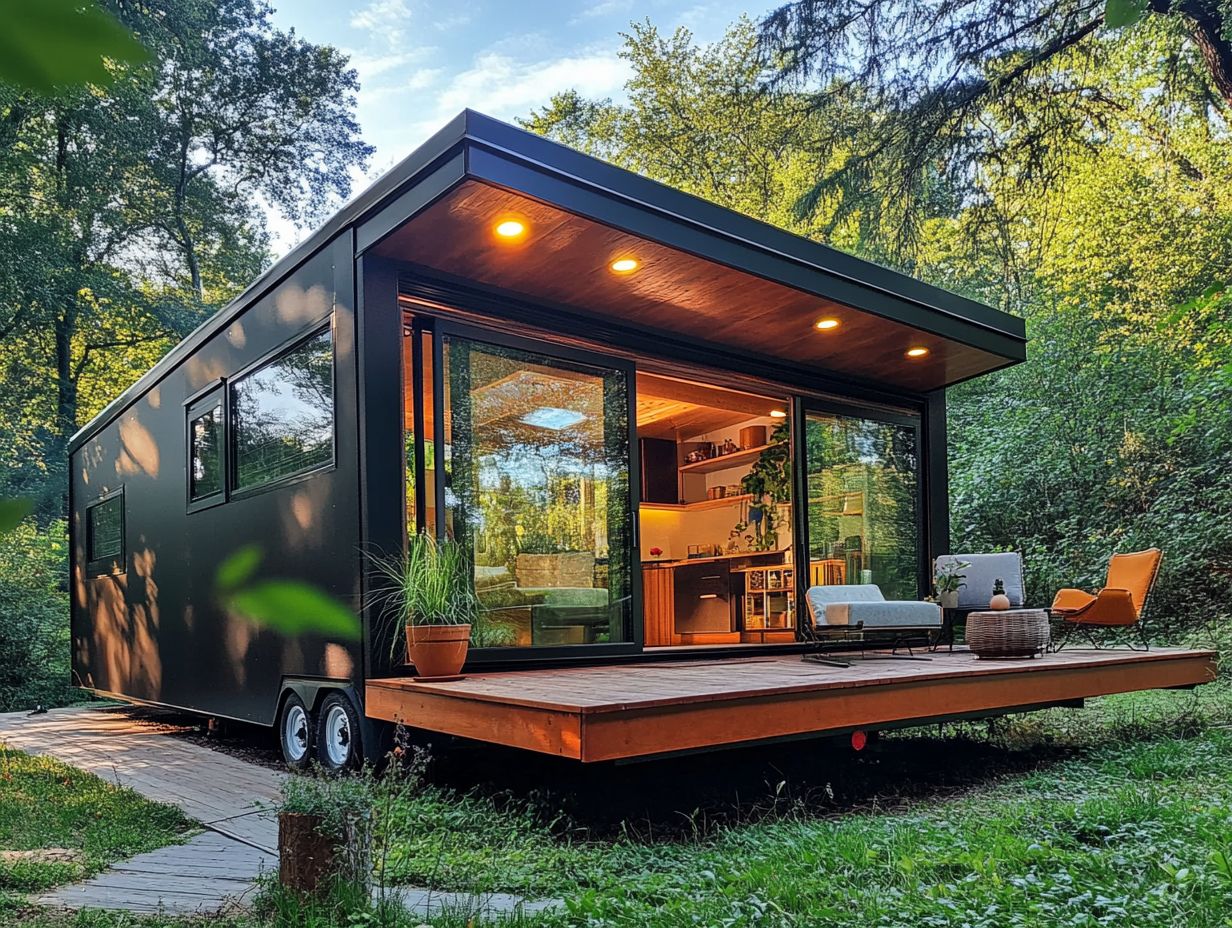
- The popularity of tiny living is rising due to a desire for simplicity and minimalism.
- Sustainable design focuses on eco-friendly materials and practices.
- Smart home technology maximizes every inch of tiny houses.
The Rise of Tiny Houses
The rise of tiny houses marks a transformative shift in housing preferences, inviting individuals and families to embrace a minimalist lifestyle. These compact homes, typically under 400 square feet, champion sustainable living by significantly reducing the amount of carbon dioxide produced associated with larger residences.
This movement resonates particularly with urban millennials seeking affordable housing solutions amid skyrocketing urban costs. It offers the allure of financial independence and the opportunity to customize living spaces in innovative ways.
As various tiny home communities emerge, they reflect a commitment to community-centered living, emphasizing shared amenities and eco-friendly construction that aligns with modern values.
Exploring the Popularity of Tiny Living
The allure of tiny living gains momentum as you, along with many urban millennials, find tiny houses appealing for their affordability and simplicity.
This generation often embraces minimalism and sustainability, pursuing lifestyles that resonate with your values while paving the way for financial freedom. Living in a tiny house not only leads to lower utility costs and less maintenance hassle, but it also allows you to explore popular tiny house designs that contribute to a reduced environmental footprint.
In tiny home communities, experience a unique sense of belonging, where residents connect over shared ideals and build supportive networks. This communal vibe enriches social interactions and encourages collaboration among like-minded individuals, allowing you to fully embrace the joys of simple living.
Sustainable Design in Tiny Houses
Sustainable design in tiny houses embodies an eco-conscious ethos. You embrace sustainable materials and innovative building practices to boost energy efficiency and minimize your carbon footprint. As the tiny home movement flourishes, more builders and homeowners prioritize eco-friendly construction methods.
This approach reduces waste and fosters a healthier living environment. By committing to sustainability, tiny homes become more than just affordable housing solutions; they actively contribute to the environment by incorporating renewable energy sources, such as solar panels and wind turbines, enhancing both your lifestyle and the planet s well-being.
Eco-Friendly Materials and Practices
Eco-friendly materials are essential in the design and construction of tiny homes. They beautifully align with the principles of sustainable design and energy efficiency.
Using reclaimed wood minimizes waste and infuses character and warmth into your living space. Low-VOC paints, which release fewer harmful chemicals, significantly enhance indoor air quality and promote a healthier environment for you and your loved ones.
Incorporating features like solar panels and energy-efficient appliances amplifies sustainability, allowing you to reduce your carbon footprint effortlessly. Integrating rainwater harvesting systems and composting toilets elevates the eco-friendliness of your compact living space, ensuring a perfect blend of comfort and a responsible approach to the environment.
Innovative Space-Saving Solutions
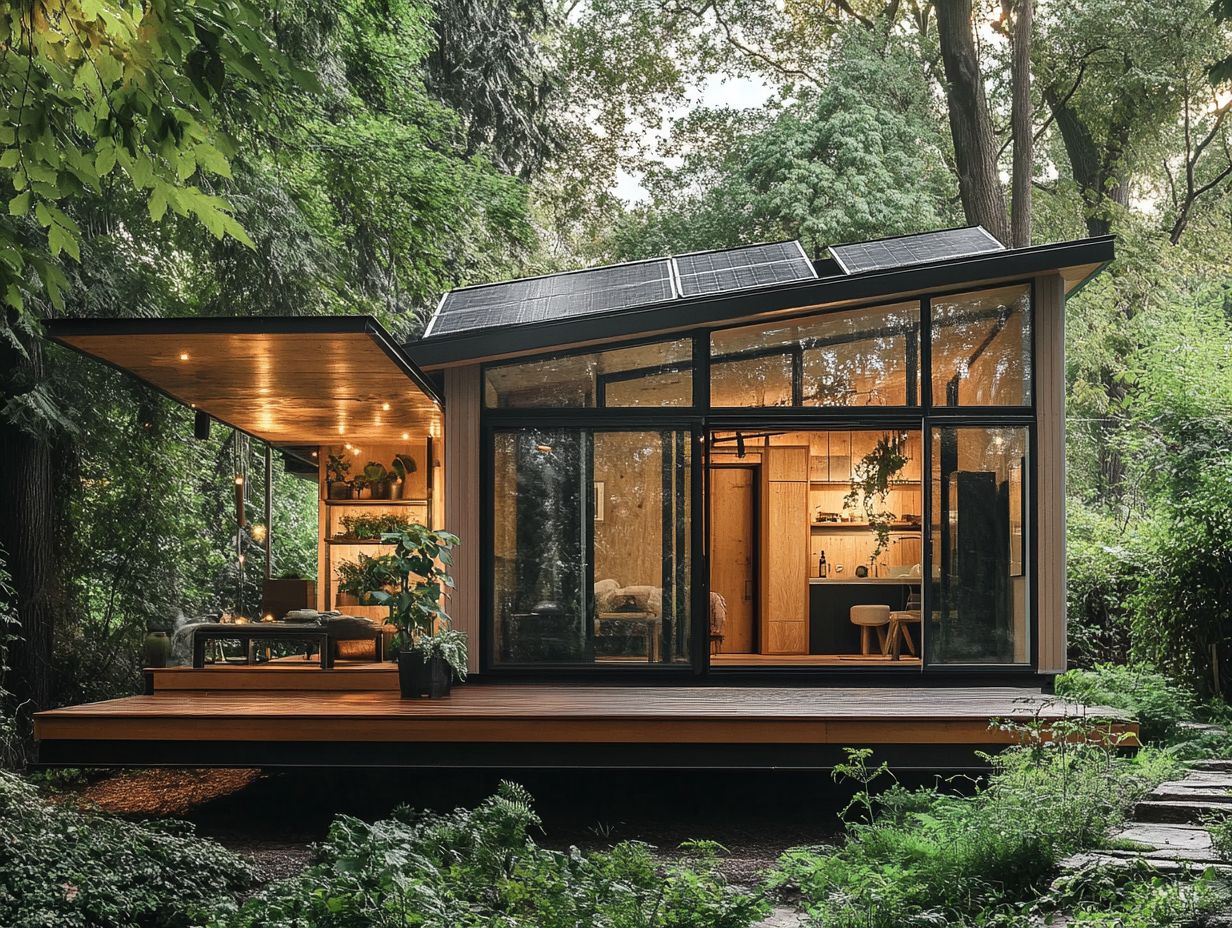
Innovative space-saving solutions are crucial in tiny home design. They allow you to maximize every inch of your living space with the clever use of multi-functional furniture. The tiny home movement is growing. Designers focus on creativity and efficiency, crafting environments that are both functional and visually appealing.
These solutions often feature foldable tables, built-in storage, and flexible seating, enabling you to embrace a comfortable and clutter-free minimalist lifestyle, even in the hustle and bustle of urban living.
Maximizing Every Inch of Space
Maximizing every inch of space in your tiny home calls for innovative design strategies and smart furniture choices. These methods enable you to live comfortably even within limited square footage.
This journey requires careful consideration of furniture arrangement and embracing multi-functional pieces that adapt to your needs throughout the day. For example, choosing a sofa that transforms into a bed or a table that expands for gatherings allows you to create flexible living areas without clutter.
You can implement vertical storage solutions, like wall-mounted shelves or hanging organizers, to make the most of unused wall space, providing accessible storage while keeping your floor clear. Clever features like sliding doors open up your space and breathe life into your tiny home.
Technology in Tiny House Design
Technology plays a pivotal role in the realm of tiny house design, where smart technology and automation elevate both energy efficiency and convenience for residents.
As the tiny home movement progresses, many homeowners are enthusiastically adopting smart home features, allowing them to monitor and control appliances, lighting, and security systems from afar. Smart home features enable you to control appliances from your phone.
These innovations not only enhance your living experience but also foster sustainability by optimizing energy consumption and reducing waste.
Smart Home Features and Automation
Smart home features and automation are transforming the tiny home design landscape, offering you enhanced control over your living environment. These technologies promote a more sustainable lifestyle and maximize functionality within your limited space.
For example, by integrating smart thermostats, you achieve efficient temperature regulation, ensuring your comfort without the burden of excessive energy consumption. Advanced security systems provide peace of mind through remote monitoring and access control, essential for anyone living in a compact dwelling.
Don’t miss out on energy-efficient lighting solutions that automatically adjust, delivering the perfect illumination based on the time of day. Together, these innovations create a harmonious blend of modern convenience and eco-friendly practices, perfectly tailored for your tiny living experience.
Unique and Creative Tiny House Designs
Unique and creative tiny house designs stand at the forefront of the tiny home movement, exemplifying innovation in customization and eco-friendly construction methods. As you seek to personalize your living space, a diverse array of design styles emerges, from rustic cabins to sleek modern mobile homes.
These innovative designs prioritize functionality while embracing sustainability, often integrating eco-friendly materials and renewable energy solutions that reflect a commitment to the environment.
Explore these innovative solutions for your own tiny home and discover how they enhance your living experience!
Breaking Away from Traditional Styles
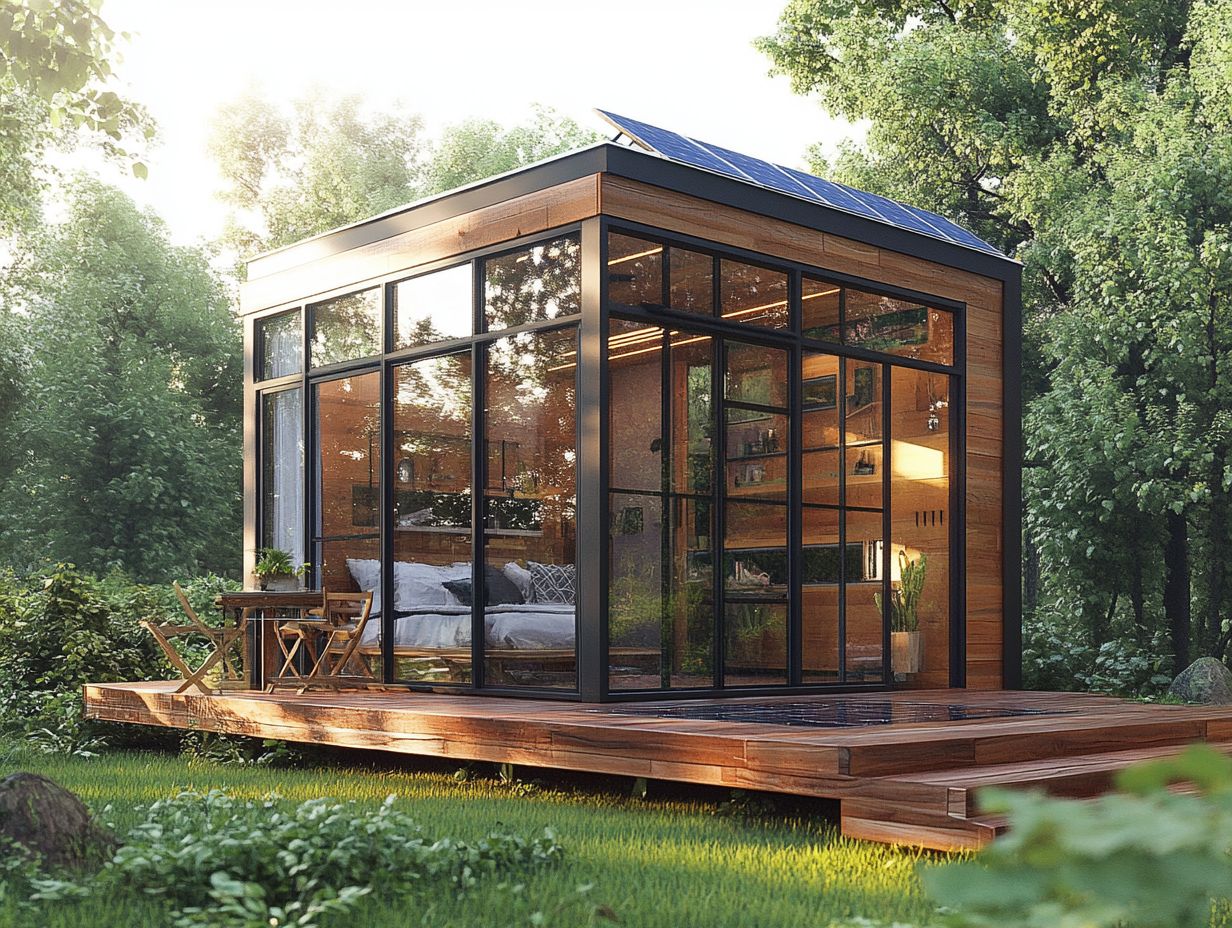
Breaking away from traditional styles, tiny home design invites readers to explore many unique styles that embody individuality and sustainability. This modern architectural movement emphasizes minimalism, functionality, and inventive space-saving solutions.
Unlike conventional homes, which can overwhelm with their large, segregated areas, tiny living spaces embrace open layouts and multifunctional furniture, allowing residents to easily adapt their environment to their needs. Bright, airy interiors filled with natural light enhance the sense of openness, while eco-friendly materials and energy-efficient systems promote a greener lifestyle. Understanding the future of tiny house legislation is also crucial for those considering this lifestyle.
Tiny homes include smart technology, enabling efficient energy management and a seamless living experience. Together, these elements create not just homes, but lifestyles that resonate deeply with those seeking the future of tiny house living and a simplified and conscientious way of living.
The Future of Tiny House Communities
The future of tiny house communities is full of exciting opportunities as they champion community-centered living and shared amenities designed to meet the needs of today s residents.
These vibrant communities are cropping up in urban areas, offering an affordable housing alternative that nurtures meaningful social connections and a genuine sense of belonging. By embracing sustainable practices and eco-friendly construction, tiny home communities not only support a minimalist lifestyle but also tackle the pressing challenges of urbanization and housing shortages. For those interested in this movement, tiny house living: a growing trend is worth exploring.
Creating Sustainable and Connected Communities
Creating sustainable and connected communities is at the heart of the tiny home movement, emphasizing shared amenities that elevate the living experience.
In these communities, there s a focus on green spaces, communal gardens, and multi-functional recreational areas, nurturing an environment where neighbors can interact and collaborate. Sharing resources helps build community, such as laundry facilities and workshops, cultivating a sense of belonging while championing eco-friendly practices.
Participating in community events and cooperative projects allows residents to tackle challenges together, reinforcing values of sustainability and self-sufficiency. With a strong emphasis on collaboration, these innovations positively influence both the environment and the quality of life for each resident, positioning tiny home communities as a blueprint for future living. For those interested in enhancing their living spaces, exploring top tiny house design trends can provide valuable insights.
Frequently Asked Questions
Curious about the latest trends in tiny house design?
Some of the current trends in tiny house design include incorporating eco-friendly materials and features, maximizing space and storage, and integrating smart technology.
How are tiny houses leading the way in sustainability?
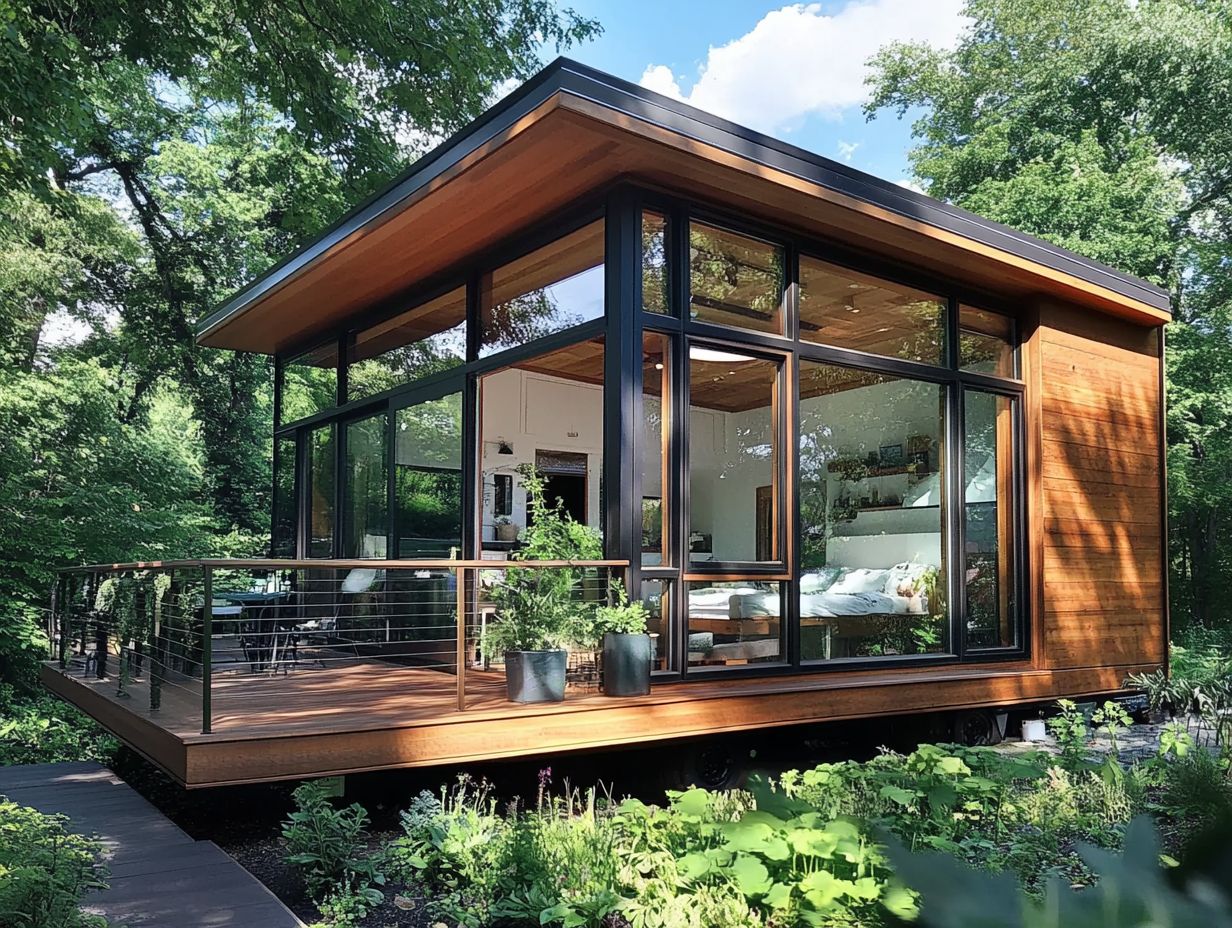
Tiny houses are leading the way in sustainability by using renewable materials, incorporating energy-efficient systems, and implementing water conservation practices.
What role does technology play in the future of tiny house design?
Technology is expected to play a major role in the future of tiny house design, with the development of smart home systems and innovative space-saving solutions.
How are tiny houses adapting to changing needs and lifestyles?
Tiny houses are adapting to changing needs and lifestyles by incorporating flexible and multi-functional spaces, such as convertible furniture and storage solutions, to accommodate different activities and living arrangements.
What are some emerging trends in tiny house design?
Some emerging trends in tiny house design include the use of modular construction methods, integrating outdoor living spaces, and incorporating biophilic design principles, which connect people with nature.
How is the tiny house movement influencing the future of home design?
The tiny house movement is influencing the future of home design by promoting a simpler and more sustainable lifestyle, inspiring innovative and creative design solutions, and challenging traditional housing norms.
Join the tiny house movement today and discover a new way to live sustainably!

